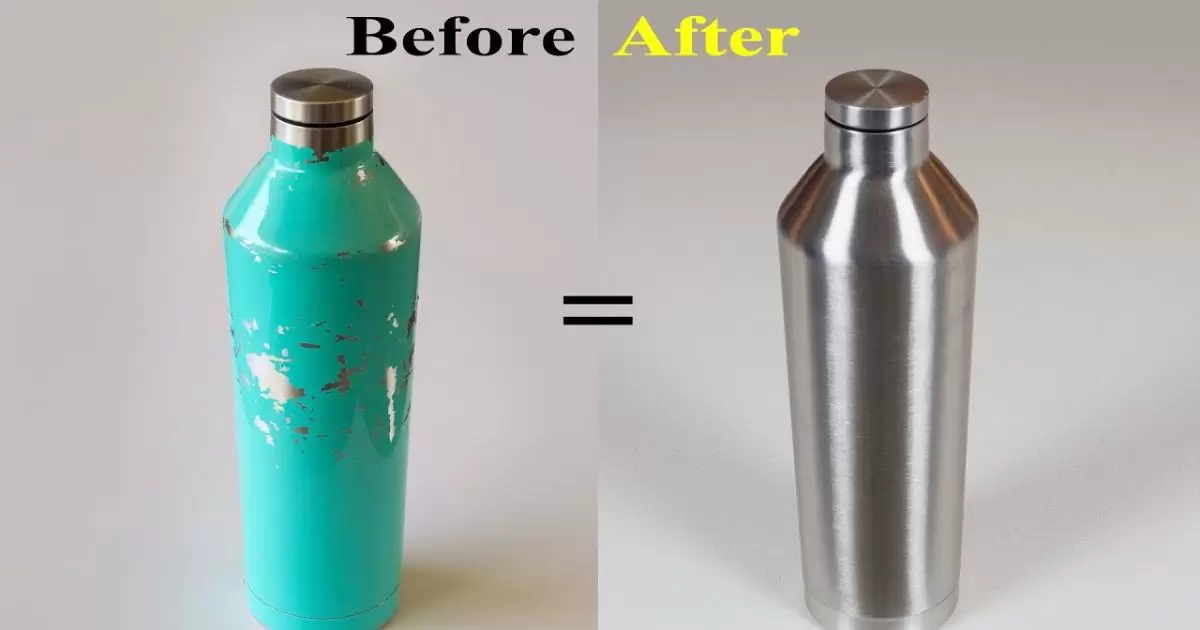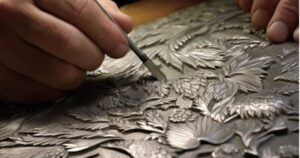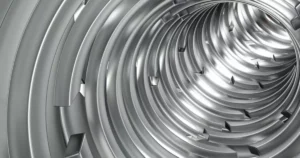Removing paint from stainless steel involves safely stripping away unwanted surface coatings to restore the metal’s original shine and characteristics. It is a multi-step process where different solvents or techniques are used to dissolve and lift the paint layer without damaging the base metal. Getting paint off of stainless steel can be challenging due to its ruggedness and the complexity of paint systems.
Have you ever ended up with painted stainless steel that you want to restore to its bare shine? You may wonder how it is possible to peel paint from such a sturdy material without causing harm. While seemingly daunting, there are proven methods for safely stripping paint off stainless steel through the use of appropriate chemicals or abrasives. With a bit of elbow grease and the right approach, bare metal can once again be revealed.
Whether dealing with a badly painted kitchen appliance, railing or laboratory equipment, removing paint from stainless steel is essential for protecting its corrosion resistance and lifespan. Certain solvents are particularly effective at breaking down paint compositions without affecting stainless steel underneath. With careful preparation and using a system matched to the paint type, the metal’s original luster can be restored through paint stripping.
What Types Of Paint Can Be Stripped From Stainless Steel?
Many types of paints are used on stainless steel surfaces for decorative or protective purposes. Commercial grade paints used in industrial settings can often be thick, durable formulas designed for adhesion. Enamel paints provide a glossy finish but their bonding strength makes removal difficult. Oil-based paints and enamel paints tend to respond well to chemical-based paint strippers due to ingredients like petroleum distillates.
Latex or water-based paints are more commonly found in residential and consumer applications. While they may appear thin, multiple latex coats can still prove challenging to fully remove. The acrylic polymers in latex paint help it adhere tightly. Some strippers are not as effective on latex but scraping and abrasives may aid the process. Knowing the paint composition helps determine the optimal stripping approach for completely exposing the stainless steel substrate. how to bend stainless steel?
Which Paint Strippers Work Best On Stainless Steel?
Caustic-based chemical strippers often work well because their alkaline ingredients can penetrate cured paint films. Sodium hydroxide is commonly used to break down bonds between paint and metal surfaces over time. These strippers require protective equipment and careful handling due to their corrosive properties. Solvent-based formulas contain strong organic compounds to dissolve coatings without damaging stainless steel underneath. Turpentine and methylene chloride provide effective performance.
Citrus-based, biodegradable strippers have gained popularity as a safer alternative to caustics and solvents. D-limonene from orange and lemon oils cuts through grease yet evaporates quickly with little odor. Abrasive blasting techniques like glass bead or plastic grit propelled by an air compressor can additionally assist with tough jobs. Selecting the most appropriate class of stripper – caustic, solvent, citrus or abrasive – tailored for the specific paint composition yields best results.
How Does One Prepare The Stainless Steel For Stripping?
Before applying any paint stripper, the stainless steel surface must be properly cleaned. Degreasing with a solvent removes any lubricants, greases or oils that could prevent the stripper from fully contacting the painted layer. Gently sanding the coating with fine-grit abrasive paper roughens its texture to allow better chemical penetration too. Inspecting for damage assessments if the material is in good condition for the stripping process.
Assessing whether the condition of the stainless steel substrate will negatively affect outcomes is important. Severely rusted, pitted or delicate materials risk further deterioration. A test strip on an inconspicuous area helps determine if the chosen stripper and technique will harm the base metal. With some strippers, even a small amount of abrasion accompanying the chemical action provides optimal results. Correct preparation enhances stripping effectiveness while protecting the stainless steel.
What Is The Safest Way To Apply The Paint Stripper?
When applying the selected paint stripper, even coverage is important for thorough removal. Rolling, brushing or spraying the stripper aims to saturate the coating without drips or pooling. Working in small sections, such as a 2×2 foot area at a time, allows re-application to problem spots before the stripper dries. Following product directions on safety gear, application technique and recommended dwelling time helps maximize performance safely.
Although times can vary, most strippers require 5-30 minutes of contact to loosen paint for scraping. Vigorously bubbling or fuming indicates the active stage. Checking instructions or doing a test patch helps gauge how long a section should soak before rubbing away softened layers. Neither under-soaking nor leaving stripper on too long is good. Proper application including full wetting and controlled dwelling leads to a complete reaction without damaging the stainless steel.
How Can One Ensure All Paint Is Completely Removed?
Thorough inspection guarantees a successful paint removal. Carefully examining the stripped surface under bright, directed lighting allows viewing minute traces left behind. Comparing to the original stainless steel finish helps identify any remaining coating. Sanding or wire brushing stubborn spots provides the friction needed to rub them away. Multiple applications may be necessary when several layers were present. With determination, complete stripping can be accomplished.
Once visually clean with no flecks detectable, the stripped stainless steel requires protection. Water rinses wash off residue before treating with a passivating solution to form a protective chromium oxide barrier or applying a new topcoat. This preserves the bright surface appearance and prevents corrosion caused by etching or depilation during stripping. Proper treatment secures the quality and resilience of stainless steel after paint removal is fully finished.
| Step | Action |
| 1 | Degrease surface with solvent to remove oils |
| 2 | Sand surface lightly to rough up paint coating |
| 3 | Select proper paint stripper for coating type |
| 4 | Apply stripper thoroughly to small sections |
| 5 | Allow stripper to soak required dwell time |
| 6 | Scrape off softened paint using scraper |
| 7 | Inspect for any remaining paint under light |
| 8 | Sand or wire brush any stubborn spots |
| 9 | Rinse fully and pat dry stainless steel |
| 10 | Apply protective treatment if needed |
Tips For Stripping Paint From Metal
When stripping paint from metal surfaces, it is important to properly prepare the vicinity and use the right merchandise. Lightly scuff the paint with sandpaper to create a better floor for the remover. Degrease any greasy spots so the chemicals can fully contact the paint. Select a remover formulated for your paint type caustics work well on enamels while citrus or solvent-based options are safer.
Apply generously and let it soak to soften the paint. Reapply as needed to problem spots. Scrape off loosened layers, then wipe clean. For stubborn areas, consider adding a little elbow grease with a non-abrasive pad. Finish by rinsing thoroughly and drying the exposed metal. This helps you safely and effectively remove unwanted paint coatings from various metals.
Ways To Remove Paint From Metal
There are some special methods for disposing of vintage paint from steel surfaces. Chemical strippers are very powerful, with caustic or citrus-based totally formulas normally operating exceptional relying at the paint kind. Applying the stripper and letting it soak allows the chemicals to break down the bond between paint and metal over time.
For large jobs, heat guns or torches can also soften and lift paint but require more care. Abrasive blasting with media like baking soda or plastic grit is another option that physically strips coatings away. On small spots, sanding with high grit sandpaper or scraping with a putty knife may suffice.
Paint Stripper
Paint stripper is a useful product for removing old coatings from surfaces like wooden, metallic, or masonry. There are extraordinary forms of strippers available, inclusive of caustic or solvent-primarily based formulas, that work satisfactory relying at the specific paint. Applying the stripper requires safety precautions – proper ventilation and protective gloves and eyewear should be worn. It’s applied in a thin, even coat using a brush or roller.
Letting it dwell allows the chemicals time to break down the bond between the paint and underlying material. Reapplications may be needed for multiple paint layers or tough jobs. Once the paint softens, it can be scraped off. Proper preparation like degreasing first and complete rinsing after stripping ensures best effectiveness and protects the exposed surface. With the right stripper and application method, unwanted paint coating can be safely and efficiently removed.
Natural Methods
For non-toxic paint removal, there are some natural methods to consider as alternatives to harsh chemical strippers. Citrus-based formulations often work well thanks to d-limonene from oranges and lemons. This cuts through grease and layers while being biodegradable. Scoring the paint with a utility knife before treatment helps it penetrate.
Applying heat from a heat gun or blow dryer can also soften coatings in combination with natural solvents. Baking soda acts as a very mild abrasive that may aid older coatings when combined with a paste of white vinegar or lemon juice. Elbow grease is still required for scraping, but these greener options offer a safer choice for bare-hands application on sensitive areas. With patience, natural removers can remove paint effectively.
Angle Grinder
An angle grinder with a wire wheel or grinding disc attachment can rapidly strip large areas of paint from metal surfaces. This power tool option requires safety precautions as it generates sparks and heat. Eye and ear protection are necessary, as is keeping the disc moving at all times to prevent burning the metal. An angle grinder works best for flat or gently curved surfaces.
It’s useful on tasks like removing paint from machinery, siding, gutters or other industrial applications. The spinning abrasive wheel scrapes away multiple paint layers quickly. Proper ventilation should be used due to fine dust, and care taken not to damage the base material. While physical rather than chemical, an angle grinder handles heavy-duty stripping jobs efficiently when handled responsibly according to manufacturer instructions.
Heat Gun
A heat gun is a handy tool for loosening paint before stripping away the softened layers. It uses a directed stream of hot air that can reach temperatures over 1000°F. This softens the bond between multiple paint coats and the surface below quickly. To use it safely, protective eyewear is a must as heat guns get very hot. Sweep the air flow back and forth over the coated area from a distance of 4-6 inches.
Check frequently as the paint darkens once ready to lift off. Go slowly to avoid scorching the material beneath. Once the paint is warm, simply scrape or wipe it away using a putty knife or cloth. A heat gun works well for limited areas or tough spots, but its heat needs monitoring to prevent damage. With care, it can aid in saving time and effort stripping paint.
A Paint Scraper
A paint scraper is a simple yet effective tool for removing old paint from surfaces. Many scrappers have a razor-sharp flexible edge that can follow contours to lift off layers of softened paint. Using a paint scraper involves scraping gently at a shallow angle to prevent gouging the surface below. It works best after a chemical stripper or heat method has loosened the bond between coating and material. The scraper can then easily slip beneath and pull up curls or sheets of paint.
Applying moderate pressure and making long, continuous strokes is preferable to jabbing motions. Sharp scrapers minimize effort. With a little elbow grease, they transform a messy stripping job into a smooth paint removal. Proper technique prevents damage while easily scaling walls, trim, or other substrates.
Orbital Sander
An orbital sander can effectively remove paint from many surfaces through an abrasive sanding action. It features a random orbital motion that sands smoothly without leaving swirl marks like a conventional sander might. To use it for stripping, start with a coarse grit paper (80-120 grit) and work up through the grits as the paint comes off. Pressing too hard will cause scratching, so let the sander do the work with light, even passes.
An orbital sander works well for large, flat areas like walls or floors, but may struggle with contours. It creates fine dust that requires a mask. The spinning sandpaper breaks the paint bond rapidly while smoothing the area underneath. Just be careful of sanding through to the base surface. With proper grit selection and technique, an orbital sander provides a fast way to strip paint.
Paint Stripper
When stripping paint, it’s important to choose the right type of stripper for the job. This will help ensure effective and safe removal. Water-based or latex paints can often be removed with citrus or multi-purpose strippers, which are gentler options. For tougher jobs like oil-based enamel paints, a more aggressive chemical stripper will be needed. Caustic strippers with lye work well but require extra precautions.
Methylene chloride formulas are very effective but also hazardous. Consider the surface material as well some strippers can damage certain substrates. A test patch in an inconspicuous area is always a good idea to check compatibility. Reading all instructions and doing a patch test will help you safely select a paint stripper formulation tailored for your specific coating and surface. This leads to faster, mess-free paint removal.
FAQs:
How do you remove dried paint from stainless steel?
Sand it lightly and use a chemical paint stripper or citrus-based totally remover to soften and lift the dried coating.
Will acetone remove paint from stainless steel?
Acetone can help dissolve a few paints however isn’t as powerful on most coatings as more potent chemical strippers.
Does vinegar remove paint from steel?
Vinegar may work to remove some minor surface paint flakes on steel through its acidity, but stronger strippers usually perform better.
How do you get paint off stainless steel cups?
Use a citrus-primarily based or solvent-containing paint stripper, follow generously, wrap cups in plastic for even soaking, then scrub off softened paint.
What is the best paint remover for metal?
Caustic-system strippers with sturdy alkalis or solvent kinds with methylene chloride successfully take away maximum paints from steel.
Can baking soda remove stains from stainless steel?
Baking soda is a mild abrasive which could assist scrub a few floor stains however isn’t always pretty sturdy sufficient on its personal to completely dispose of dried or baked-on paint from stainless-steel.
Conclusion:
Removing paint from chrome steel surfaces may be a challenging project, however with the proper methods and patience, it is manageable. Chemical strippers, abrasives, and heat guns are powerful gear, however they need to be used with warning to avoid damaging the stainless-steel.
How to remove paint from stainless steel? May be replied via carefully evaluating the form of paint, the circumstance of the surface, and selecting the proper removal technique. Remember to always work in a properly-ventilated region, wear protecting gear, and observe the manufacturer’s commands for any chemical compounds or gear used.
With right practise and method, you may restore the herbal luster and corrosion-resistant properties of your chrome steel surfaces. Regular protection and right cleansing techniques will assist save you destiny paint buildup and make certain the longevity of your stainless steel items.








